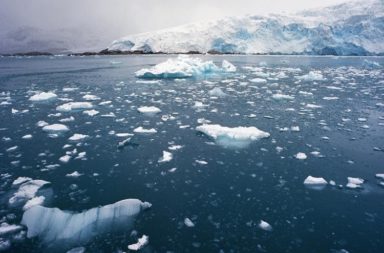An international effort that brought together more than 60 ice, ocean and atmospheric scientists from three dozen international institutions has generated new estimates of how much of an impact Earth’s melting ice sheets could have on global sea levels by 2100. If greenhouse gas emissions continue apace, Greenland and Antarctica’s melting ice sheets could together contribute more than 38 centimetres of global sea-level rise by 2100, says a NASA-led study.
At least 60 scientists studied the impact of melting ice sheets on global sea-level rise and arrived at the estimates. The results were published in the journal The Cryosphere on September 17, 2020. The findings are in line with projections in the Intergovernmental Panel on Climate Change’s (IPCC) 2019 Special Report on Oceans and the Cryosphere or portions of Earth’s surface where water is in solid form, NASA said.
In case of high Green House Gas emissions, Greenland ice sheet would lead to an additional global sea-level rise of about 3.5 inches (9 cm) by 2100. In the lower emissions scenario, the loss from the ice sheet would raise global sea-level by about 1.3 inches (3 cm). Meanwhile, Antarctica’s vast ice sheets have the potential to cause sea levels to surge by up to 12 inches (30 cm) by the end of the century.
These new results, published in a special issue of the journal The Cryosphere, come from the Ice Sheet Model Intercomparison Project (ISMIP6) led by NASA’s Goddard Space Flight Center in Greenbelt, Maryland. “One of the biggest uncertainties when it comes to how much sea level will rise in the future is how much the ice sheets will contribute,” said project leader and ice scientist Sophie Nowicki, now at the University at Buffalo, and formerly at NASA Goddard. “And how much the ice sheets contribute is really dependent on what the climate will do.”
According to Hélène Seroussi, who led the Antarctic ice sheet modelling in the ISMIP6 effort: “The Amundsen Sea region in West Antarctica and Wilkes Land in East Antarctica are the two regions most sensitive to warming ocean temperatures and changing currents, and will continue to lose large amounts of ice. With these new results, we can focus our efforts in the correct direction and know what needs to be worked on to continue improving the projections.”





